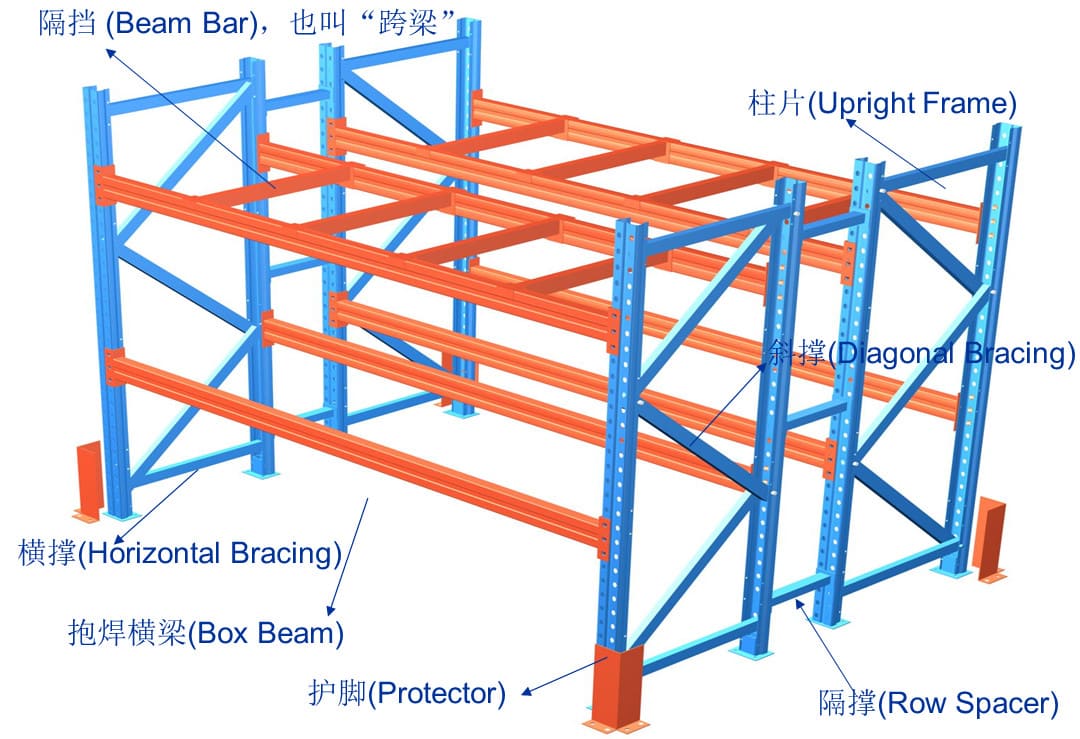In the dynamic world of logistics and storage solutions, Warehouse Racking Systems emerge as the backbone of efficient warehouse management. This article delves into the significance of Warehouse Racking Systems, their diverse applications, the advantages they bring to modern warehouses, and how they play a pivotal role in optimizing storage space for businesses across industries.
Section 1: Unraveling the Essence of Warehouse Racking Systems
What Are Warehouse Racking Systems?
Warehouse Racking Systems are purpose-built structures designed to organize and optimize storage space within warehouses and distribution centers. These systems utilize a variety of configurations, including pallet racks, shelving units, and mezzanines, to maximize the vertical space available and enhance the accessibility of stored goods.
Significance in Modern Warehousing
The significance of Warehouse Racking Systems lies in their ability to transform traditionally used warehouse spaces into highly organized, efficient, and scalable storage environments. As businesses grapple with the challenges of inventory management and order fulfillment, these systems become integral to streamlining operations.
Section 2: How Warehouse Racking Systems Work
Configurations and Utilization
Warehouse Racking Systems come in various configurations, each catering to specific storage needs. Pallet racks, for example, are designed to store goods on pallets, while shelving units are ideal for smaller items. Mezzanines provide an additional level of storage, effectively doubling the available space without expanding the physical footprint of the warehouse.
Accessibility and Retrieval
The design of Warehouse Racking Systems ensures that stored goods are easily accessible and retrievable. This is achieved through thoughtful placement of racks and shelving units, allowing for efficient navigation and retrieval of items with minimal disruption to the overall organization of the warehouse.
Section 3: Applications and Versatility
E-commerce Warehousing
In the realm of e-commerce, where rapid order fulfillment is essential, Warehouse Racking Systems play a critical role. These systems enable the organized storage of a vast array of products, facilitating efficient picking and packing processes to meet the demands of online shoppers.
Manufacturing Facilities
Manufacturing facilities benefit from Warehouse Racking Systems by optimizing the storage of raw materials, work-in-progress inventory, and finished goods. The versatility of these systems ensures adaptability to the diverse needs of different manufacturing processes.
Section 4: Advantages of Warehouse Racking Systems
Space Optimization
Warehouse Racking Systems are designed to make the most of available vertical space, optimizing storage capacity without the need for expansive floor areas. This efficient use of space is especially valuable in urban environments where real estate is at a premium.
Improved Inventory Management
The organized structure of Warehouse Racking Systems facilitates systematic inventory management. This includes accurate tracking of stock levels, easy identification of products, and streamlined processes for restocking and replenishment.
Enhanced Safety and Accessibility
Well-designed Warehouse Racking Systems prioritize safety and accessibility. Features such as aisle space, proper load distribution, and safety measures contribute to a secure working environment for warehouse personnel and ensure the smooth flow of operations.
Section 5: The Future of Warehouse Racking Systems in Logistics
Automation and Robotics Integration
The future of Warehouse Racking Systems may involve increased integration with automation and robotics. This includes the use of automated guided vehicles (AGVs) and robotic systems for tasks such as picking, packing, and replenishment, enhancing overall operational efficiency.
Sustainable Warehousing Practices
As sustainability becomes a focal point in business operations, Warehouse Racking Systems may evolve to incorporate eco-friendly materials and designs. This shift aligns with the broader goal of creating sustainable and environmentally conscious warehouse practices.
Warehouse Racking Systems stand as a testament to the evolution of warehouse management in the modern era. Their ability to optimize space, improve accessibility, and enhance overall efficiency makes them indispensable for businesses navigating the complexities of logistics and inventory management. As industries continue to evolve, Warehouse Racking Systems are poised to play a central role in shaping the future of warehousing, offering scalable solutions that adapt to the ever-changing needs of businesses worldwide. With ongoing innovations and a commitment to enhancing storage capabilities, these systems are set to remain at the forefront of efficient and organized warehouse management practices.

